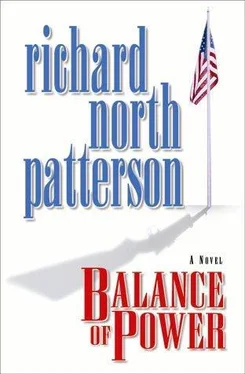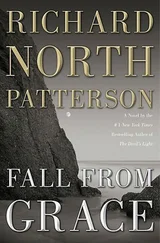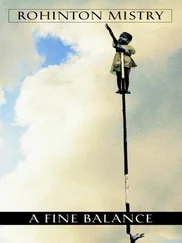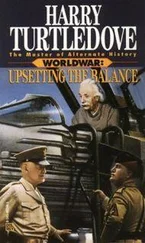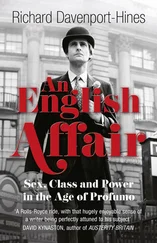Richard Patterson - Balance of Power
Здесь есть возможность читать онлайн «Richard Patterson - Balance of Power» весь текст электронной книги совершенно бесплатно (целиком полную версию без сокращений). В некоторых случаях можно слушать аудио, скачать через торрент в формате fb2 и присутствует краткое содержание. Жанр: Старинная литература, на английском языке. Описание произведения, (предисловие) а так же отзывы посетителей доступны на портале библиотеки ЛибКат.
- Название:Balance of Power
- Автор:
- Жанр:
- Год:неизвестен
- ISBN:нет данных
- Рейтинг книги:5 / 5. Голосов: 1
-
Избранное:Добавить в избранное
- Отзывы:
-
Ваша оценка:
- 100
- 1
- 2
- 3
- 4
- 5
Balance of Power: краткое содержание, описание и аннотация
Предлагаем к чтению аннотацию, описание, краткое содержание или предисловие (зависит от того, что написал сам автор книги «Balance of Power»). Если вы не нашли необходимую информацию о книге — напишите в комментариях, мы постараемся отыскать её.
Balance of Power — читать онлайн бесплатно полную книгу (весь текст) целиком
Ниже представлен текст книги, разбитый по страницам. Система сохранения места последней прочитанной страницы, позволяет с удобством читать онлайн бесплатно книгу «Balance of Power», без необходимости каждый раз заново искать на чём Вы остановились. Поставьте закладку, и сможете в любой момент перейти на страницу, на которой закончили чтение.
Интервал:
Закладка:
Finally, the chapter in which Kerry Kilcannon visits a gun show in Las Vegas is rooted in my own personal observations of such a show. Every description in that chapter is derived from that experience. The only alterations are that I took the bumper-sticker aspersions cast on other public figures and substituted the Kilcannons; modeled the "Lexington P-2" and "Eagle's Claw" bullet after other, virtually identical, weapons; and imported a target practice cutout of former President and Mrs. Clinton from a gun store in New Hampshire, replacing the Clintons with Kerry and Lara Kilcannon.
With that, I wish to thank all those who helped.
The Senate is an institution unto itself, and its workings and procedures are as intricate as they are, to me, fascinating. I am deeply indebted to the following current or former members of that body: Barbara Boxer, William Cohen, John Edwards, Edward Kennedy, John McCain, and, in particular, Bob Dole, whose advice has been invaluable for three books now. Others, including current and former Senate staffers, helped with respect to both politics and process: Melody Barnes, Mark Busey, Bruce Cohen, Meredith McGehee, Ed Pagano, Martin Paone, Robin Toone, and Bob Tyrer. Special thanks to former Senate Parliamentarian Bob Dove, who not only walked me through the process, but was kind enough to review the manuscript.
I was lucky to have advice from several scholars, journalists, and public officials and writers who have studied the issue from various perspectives: Ron Brownstein, Dr. Philip Cook, Morris Dees, Dr. Glen Pierce, Dr. Stephen Teret, Dr. Jay Wachtel, and, especially, Matt Bai and Susan Ginsberg. Similarly, I was schooled in the medical aspects of gun violence—from surgery to the public health aspects—by Dr. Beth Kaplan, Dr. Arthur Kellerman, Dr. Robert Liner, Dr. Robert Mackersie, Dr. Irene Marquez-Biggs, Sean Reynolds, Dr. H. William Taeusch, and, in particular, Dr. Margaret Knudson and Dr. William Schwab.
A number of current or former employees of the Bureau of Alcohol, Tobacco and Firearms helped me with the often complicated regulatory environment surrounding guns, as well as with various investigative methods: Dale Armstrong, Terry Austin, Tara Bedford, Tom Cannon, John D'Angelo, Fanny Hasselbacher, Ed Owen, Jack Patterson, and John Torres. Many thanks to all.
Several talented people discussed with me the subject of gun politics at the Presidential level, as well as past legislative and regulatory efforts to reduce gun violence, including Harold Ickes, Bruce Reed, and Max Stier. Special thanks to Bruce Lindsey and Cheryl Mills, not only for their advice but for reviewing all or part of the manuscript, and to President Bill Clinton for his observations about the politics of guns. Still others filled me in on various aspects of gun politics: Rich Bond, Carter Eskew, Peter Fenn, Mandy Grunwald, Ron Kaufman, Joel Klein, Peter Knight, Celinda Lake, Joe Lockhart, Mike McCurry, Bill McInturff, Scott Reed, Don Simon, Tom Strickland, and Michael Terris.
The jurisprudence of gun lawsuits and the Second Amendment was also an important subject. I read every significant legal decision regarding the Second Amendment and lawsuits against gun companies, as well as a number of scholarly articles on these subjects. I am grateful to the following legal experts for their help: Fred Baron, Arthur Bryant, Leah Castella, Owen Clements, John Coale, Leslie Landau, Linda Lipson, and Dennis Henigan. Thanks as well to Victor Schwartz and James Wooten for their important observations regarding gun lawsuits and tort reform.
I was fortunate to have the advice of a number of prominent advocates of gun safety. I begin with my current and former colleagues at the Brady Campaign: Mike Barnes, Ellen Moran, and Tony Orza. I learned much from the Web site for the Brady Campaign (www.bradycampaign.org; www.bradycenter.org) and that of its grassroots affiliate, the Million Mom March (www.millionmommarch.com). I am also grateful to the following members of Americans for Gun Safety: Jon Cowan, Jim Kessler, Matthew Bennett, Michael Harrington, Lisa Kimbrough, and Meghan Sherman. Finally, I am deeply grateful to two women who, having lost loved ones to gun violence, speak to this tragedy as advocates in the most important way possible: Mary Leigh Blek and Carole Kingsley.
I was not as fortunate with gun rights advocates. My calls and letters requesting time with the principal officers of the National Rifle Association went unanswered; apparently, and perhaps understandably, they did not wish to meet with a novelist affiliated with the Brady Campaign. Nonetheless, that choice was theirs, and I regret being unable to present their thoughts. I did have off-the-record talks with two persons affiliated with the NRA, and immersed myself in NRA publications. Thus the SSA's public rhetoric and positions on gun rights closely reflects that of the NRA. In particular, the article I attributed to the SSA magazine in Chapter Two of Part One includes quotations from or close paraphrases of an actual, much longer article in the NRA magazine Am erica's First Freedom . Similarly, Charles Dane's speech at the Washington Monument includes brief passages from two speeches given by Charlton Heston, then the President of the NRA, and Wayne La Pierre, its executive director. I am very grateful to Beth Lavach, who has extensive experience in Congressional relations on behalf of the gun industry, for her advice on legislative matters. Also of great assistance were two gun rights advocates whose efforts at compromise sometimes put them in conflict with the NRA, Richard Feldman and Robert Ricker.
One of the interesting benefits of my research is that I came away with some real sympathy for the executives of gun companies, many of whom value guns for their quality and craftsmanship. These executives face a difficult dilemma, caught as they are between gun safety advocates and the lawyers who represent them, on the one side, and the NRA, which—in addition to its dominant presence in Washington, D.C.—reaches many of their customers. For these reasons, the NRA has an immense power over the gun industry—perhaps even, as has been demonstrated in the past, the potential to create a credible threat of such crippling economic harm that an individual company fears being forced out of business. Special thanks to Paul Januzzo, Ken Jorgenson, Bob Scott, and Ed Shultz for sharing their diverse perspectives as current or former executives of Glock and Smith & Wesson.
Gun violence is the leading cause of death in domestic violence incidents. My outstanding colleagues at the Family Violence Prevention Fund, Janet Carter and Esta Soler, helped me present the dynamic of an abusive marriage, and Esta was kind enough to review the manuscript. Also of great value were several publications by the Fund. And Susan Breall, Sarah Buehl, and Juan Cuba helped me present both the legal and personal aspects of this tragedy.
A number of people advised me on other subjects: Letitia Baldrige, former social secretary to the Kennedy White House, concerning the Kilcannon's wedding preparations; Fr. John Blaker with respect to the religious aspects of the wedding; Katie Couric on the nature of the media competition for the Lara Kilcannon interview; Alan Dershowitz with respect to the intricacies of the Kilcannons' privilege claims; Dr. Kenneth Gottlieb and Dr. Rodney Shapiro regarding the psychological issues surrounding the Bowden's marriage, and the reactions of both Kerry and Lara Kilcannon to the murders; San Francisco Homicide Inspector Napoleon Hendrix on the details of the murders; John Phillips and Mary Louise Cohen on the role of inside informants in complex litigation; and Terry Samway of the Secret Service regarding the problems surrounding the protection of the Kilcannons and the attempts to protect Lara's family. All helped enrich the texture of this novel.
Читать дальшеИнтервал:
Закладка:
Похожие книги на «Balance of Power»
Представляем Вашему вниманию похожие книги на «Balance of Power» списком для выбора. Мы отобрали схожую по названию и смыслу литературу в надежде предоставить читателям больше вариантов отыскать новые, интересные, ещё непрочитанные произведения.
Обсуждение, отзывы о книге «Balance of Power» и просто собственные мнения читателей. Оставьте ваши комментарии, напишите, что Вы думаете о произведении, его смысле или главных героях. Укажите что конкретно понравилось, а что нет, и почему Вы так считаете.
